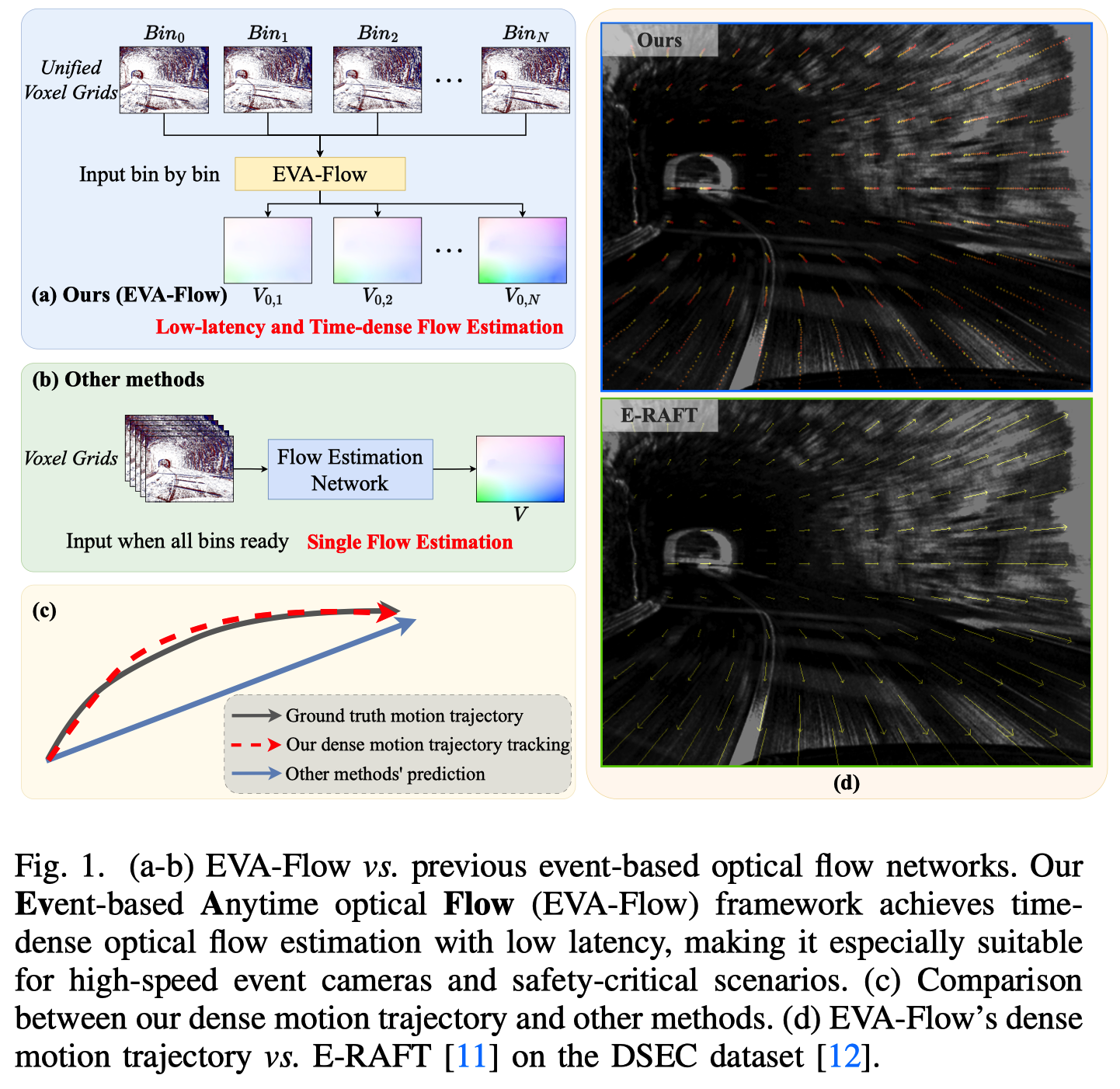Towards Anytime Optical Flow Estimation with Event Cameras
Optical flow estimation is a fundamental task in the field of autonomous driving. Event cameras are capable of responding to log-brightness changes in microseconds. Its characteristic of producing responses only to the changing region is particularly suitable for optical flow estimation. In contrast to the super low-latency response speed of event cameras, existing datasets collected via event cameras, however, only provide limited frame rate optical flow ground truth, (e.g., at 10Hz), greatly restricting the potential of event-driven optical flow. To address this challenge, we put forward a high-frame-rate, low-latency event representation Unified Voxel Grid, sequentially fed into the network bin by bin. We then propose EVA-Flow, an EVent-based Anytime Flow estimation network to produce high-frame-rate event optical flow with only low-frame-rate optical flow ground truth for supervision. The key component of our EVA-Flow is the stacked Spatiotemporal Motion Refinement (SMR) module, which predicts temporally dense optical flow and enhances the accuracy via spatial-temporal motion refinement. The time-dense feature warping utilized in the SMR module provides implicit supervision for the intermediate optical flow. Additionally, we introduce the Rectified Flow Warp Loss (RFWL) for the unsupervised evaluation of intermediate optical flow in the absence of ground truth. This is, to the best of our knowledge, the first work focusing on anytime optical flow estimation via event cameras. A comprehensive variety of experiments on MVSEC, DESC, and our EVA-FlowSet demonstrates that EVA-Flow achieves competitive performance, super-low-latency (5ms), fastest inference (9.2ms), time-dense motion estimation (200Hz), and strong generalization. Our code will be available at https://github.com/Yaozhuwa/EVA-Flow.
PDF Abstract


